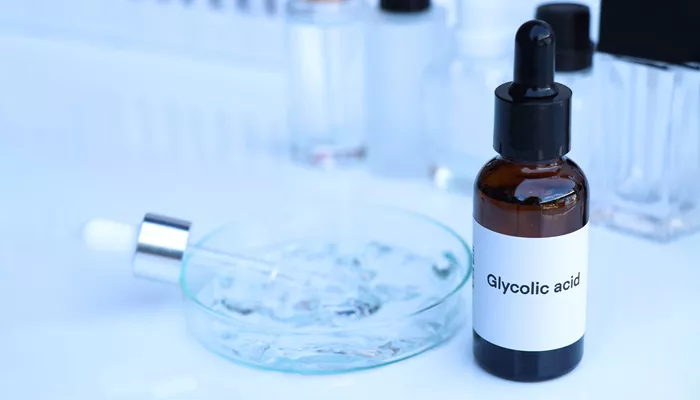Glycolic acid is a prominent ingredient in the field of dermatology and cosmetic skincare, known for its multifaceted benefits. As an alpha hydroxy acid (AHA), glycolic acid is derived from sugarcane and is celebrated for its ability to exfoliate the skin, enhance hydration, and promote cellular turnover. This article explores the various applications of glycolic acid, its benefits, mechanisms of action, and how it can be effectively incorporated into skincare routines.
Understanding Glycolic Acid
Chemical Structure and Properties
Glycolic acid is the smallest molecule in the AHA family, which allows it to penetrate the skin effectively. Its chemical formula is C2H4O3, and it is characterized by its ability to dissolve the bonds that hold dead skin cells together. This property makes it an excellent exfoliant, promoting smoother and more radiant skin.
Mechanism of Action
The primary action of glycolic acid involves breaking down the lipids that bind corneocytes (skin cells) in the outer layer of the skin. By weakening these connections, glycolic acid facilitates the shedding of dead skin cells, revealing fresher skin underneath. This process not only improves skin texture but also enhances the absorption of other skincare products.
Benefits of Glycolic Acid
1. Exfoliation
Glycolic acid is renowned for its exfoliating properties. Unlike mechanical exfoliants that can be harsh on the skin, glycolic acid offers a gentle chemical exfoliation. This method helps to unclog pores, reduce breakouts, and minimize the appearance of acne scars. Regular use can lead to a more even skin tone and texture.
2. Anti-Aging Properties
As we age, skin cell turnover slows down, leading to a buildup of dead skin cells and a dull complexion. Glycolic acid accelerates this process by promoting cell renewal, which helps to reduce fine lines and wrinkles. Studies have shown that glycolic acid can significantly improve photo-damaged skin by enhancing collagen production and increasing elasticity.
3. Brightening Effect
Glycolic acid can help fade hyperpigmentation caused by sun damage or acne scars. By exfoliating the top layer of skin, it removes darker dead skin cells and promotes a more uniform complexion. Users often report a brighter and more radiant appearance after incorporating glycolic acid into their skincare routine.
4. Hydration
Interestingly, glycolic acid also acts as a humectant, meaning it attracts moisture to the skin. It enhances the synthesis of glycosaminoglycans, which are essential for maintaining hydration levels in the skin. This dual action makes glycolic acid beneficial for both oily and dry skin types.
5. Acne Treatment
For those struggling with acne-prone skin, glycolic acid can be particularly effective. By keeping pores clear of dead skin cells and excess oil, it minimizes the risk of breakouts. Additionally, its antibacterial properties help inhibit bacterial growth on the skin.
How to Use Glycolic Acid
Choosing the Right Product
Glycolic acid is available in various formulations including cleansers, toners, serums, and masks. When selecting a product:
Concentration: Start with lower concentrations (around 5-10%) if you are new to glycolic acid.
Formulation: Consider your skin type; lighter formulations may be better for oily skin while creamier options may suit dry skin.
Application Guidelines
Patch Test: Always perform a patch test before using a new glycolic acid product to check for sensitivity.
Frequency: Begin with once or twice a week usage to allow your skin to acclimate.
Layering: Apply glycolic acid products after cleansing but before moisturizing.
Sun Protection: Glycolic acid can increase sun sensitivity; therefore, wearing sunscreen daily is essential when using these products.
Common Mistakes to Avoid
Overuse: Using glycolic acid too frequently can lead to irritation or peeling.
Neglecting Sunscreen: Failing to protect your skin from UV rays can counteract the benefits of glycolic acid.
Potential Side Effects
While glycolic acid is generally safe for most people, some may experience side effects such as:
- Redness
- Irritation
- Dryness
- Peeling
These effects are usually temporary and subside as your skin adjusts to the treatment.
Conclusion
Glycolic acid is a versatile ingredient that offers numerous benefits for various skin types and concerns. From its powerful exfoliating properties to its ability to enhance hydration and combat signs of aging, incorporating glycolic acid into your skincare routine can lead to significant improvements in overall skin health. With proper usage and precautions, glycolic acid can be a valuable addition to any beauty regimen.
By understanding how glycolic acid works and how best to use it, individuals can achieve healthier, more radiant skin while minimizing potential side effects. Whether you are dealing with acne scars or simply seeking a brighter complexion, glycolic acid stands out as an effective solution in modern skincare practices.
Related topic:
What Is Salicylic Acid Good For In Skincare?
Can Hyaluronic Acid Injections Treat Eye Circles?

